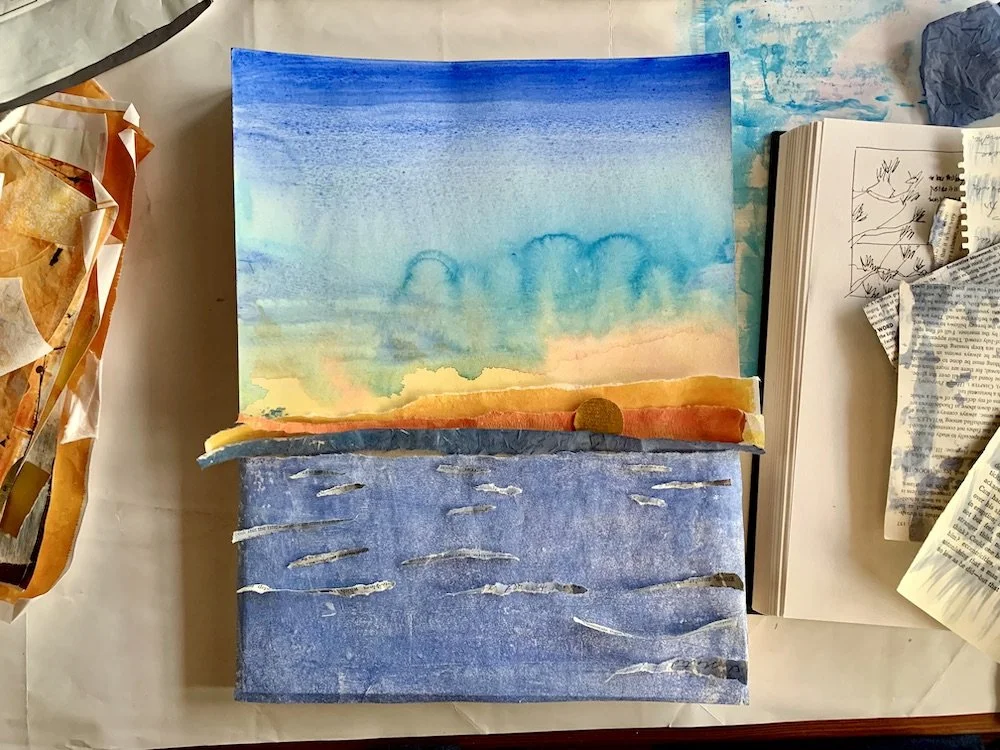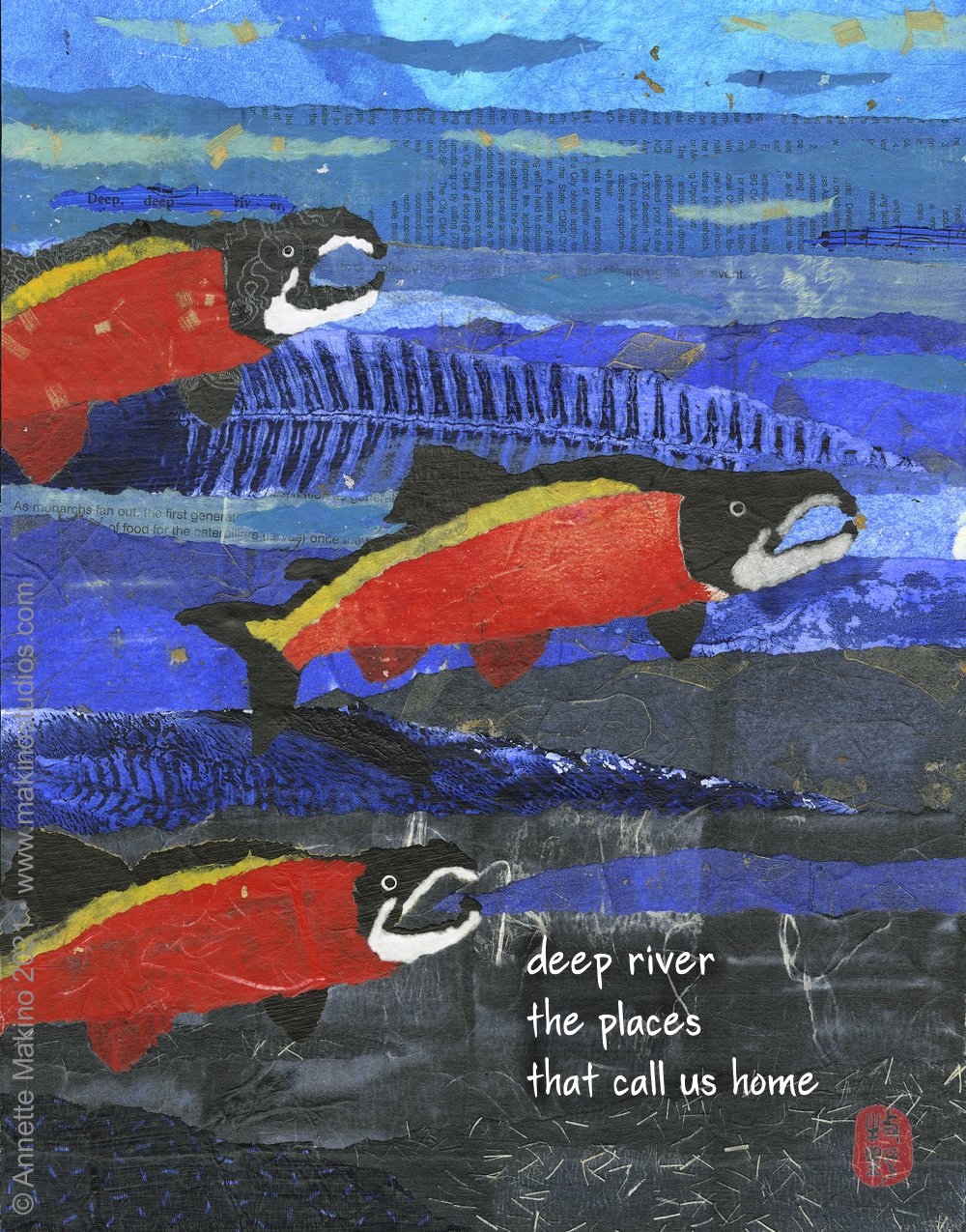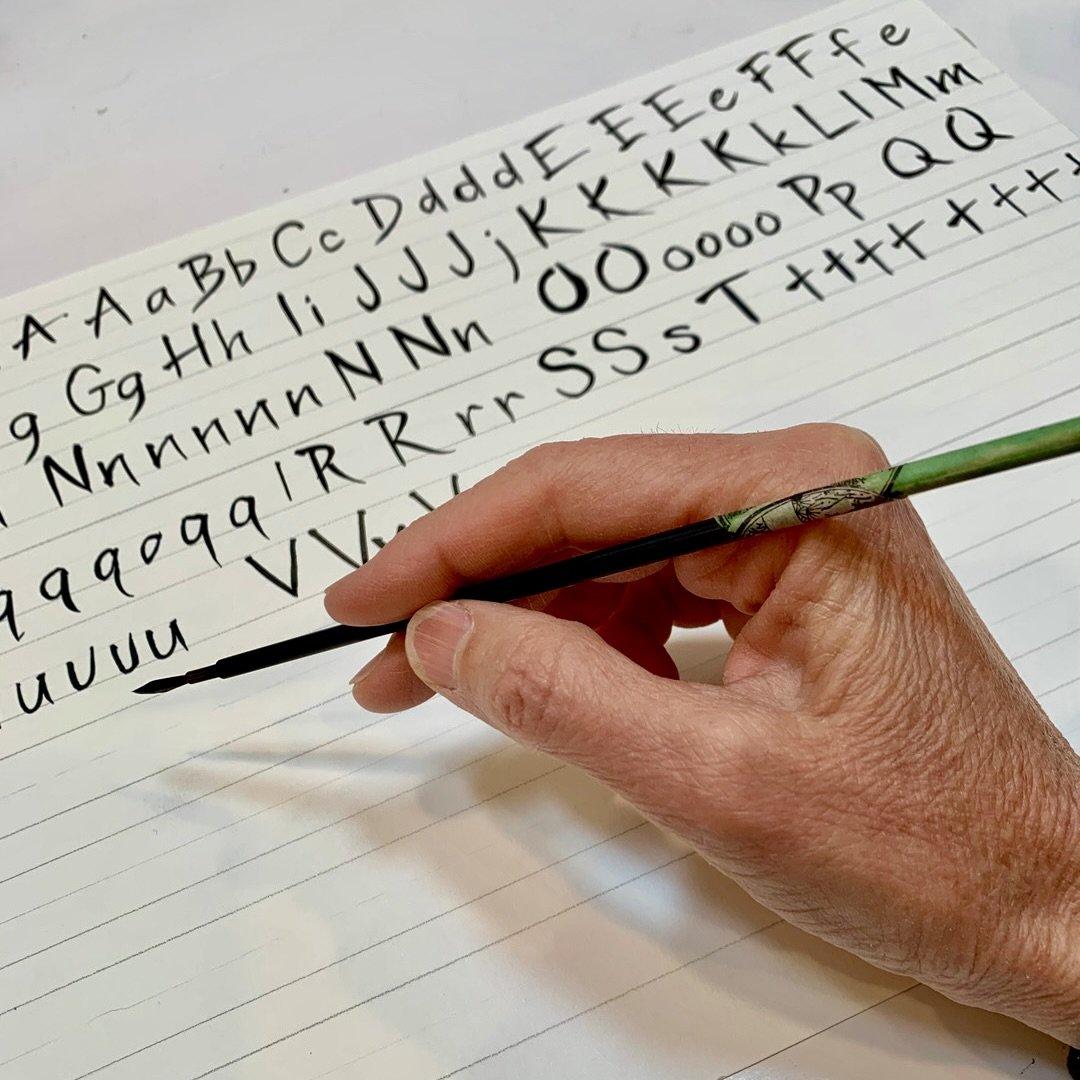“baby sparrow” is 11x14, made from paper, acrylic paint, pencil, charcoal and glue on birch panel. It is one of two pieces now showing at the Medium Gallery in Ukiah, CA. The image is also available as a card reading, “so happy you were born.” © Annette Makino 2022
First of all, Happy Fourth of July! To celebrate, I’m offering 20% off everything in my Makino Studios shop (except original art) on orders of $20 or more. Just use code 4JULY at checkout before midnight this Sunday.
In the months since I last wrote, I’ve spent a lot of time caregiving for my 96-year-old mother. I’ve also been been traveling—I spent most of April exploring and hiking through the gorgeous, otherworldly Southwestern US (see pics on my Insta and Facebook, links below).
red rock canyon
just a matter
of time
But my main activity of the past few months has been making art. While some artists can create under any conditions, I need everything to be just so to feel ready to work. A cluttered art studio and too many urgent items on my to-do list are creative turnoffs: I need a clean space and a clear mind. Since my artistic urge is such a fragile flower, I try to nurture it whenever it blooms.
After a creative dry spell of several months, conditions have been right for a very productive artistic streak. At the moment I have eleven new collages waiting to be scanned and combined with haiku. With several more ideas percolating, there should be plenty of pieces to choose from for my 2025 calendar of art and haiku. Many of these pieces will also become cards once I figure out the words. I’m excited to share the new work with you this fall!
Sometimes while struggling with a piece, I wonder why I bother making collages. They can take as much time or more as regular paintings. So why bother fiddling with little bits of colored paper to make an image that I could just as easily paint, with more realistic results?
Well, after a decade of making fairly representational paintings in Japanese watercolors and sumi ink, I felt I had come to the end of that approach. My 2021 book, Water and Stone, was the culmination of that ten-year period. Though several notches short of mastery, I had reached a level of ability where there was not enough of a challenge left to interest me. Even though it can be uncomfortable or scary to try something new, I enjoy being stretched.
baby sparrow
the thin line between
falling and flying
I also love solving puzzles. For a couple of years I was hooked on playing the Scrabble-like game Words With Friends on my phone, absurdly spending up to an hour to find the highest-scoring word for each turn. Some years earlier, while staying in a Swiss village with my family, I got so addicted to completing a jigsaw puzzle that I missed out on a magical, snowy New Year’s Eve walk—as my husband keeps reminding me.
a thousand-piece puzzle deeper into winter
Alas, I was denied the satisfaction of finishing that puzzle: the last piece was missing.
thrift store puzzle
the holes
you can never fill
I recently realized that I enjoy making collages because it’s a continuous process of solving puzzles. The challenge: using only torn bits of paper, how can I create the picture I have in my mind? Which collage papers from my stash best represent the colors, textures and sizes I need to create that image? Sure, I can paint papers specifically for a particular need, but that is time-consuming and messy—I much prefer to hunt for the right piece from the collection of papers I’ve already painted.
Process shot of the golden retriever piece.
A couple of weeks ago I was working on a scene of a golden retriever at the beach. I leafed through my collection of painted blue papers for a way to represent the waves. Aha! A sheet printed with slate blue paint in a lively texture obtained by wrinkling tin foil and then rolling paint over it. And a bit of lacy white rice paper that could serve as the foamy edge of the wave. Oh, and for the dog’s chest, a deep gold piece of a map with Arabic place names that could imply long, wavy fur. Puzzle pieces falling into place. And the collage takes form.
rustling paper
becomes wings
becomes wind
I’m looking forward to lots more puzzling ahead as I figure out how to make my collages come alive. Here’s wishing you a fun July 4th weekend and a fulfilling summer!
•
Makino Studios News
Fourth of July sale: Cards, notecard sets, prints, books and more—take 20% off site-wide through this Sunday at midnight on orders of $20 and up! Enter code 4JULY at checkout. Offer excludes original art.
Paper, Paste, and Pulp: I have two collages in this show at Medium Gallery in Ukiah, CA. The opening is during First Friday tomorrow, July 5, from 5 to 8 p.m. and the show runs until July 27. The gallery is in the Pear Tree Shopping Center near Bank of America. I can’t attend the show but if you happen to make it, please send pics!
Anywhere But Here: I’ll also be represented in the Medium Gallery’s August show, with reflections on time and place, longing, wanderlust and exploration. The opening is during First Friday on August 2 from 5 to 8 p.m. and the show runs until August 31.
Made in America II: A Humboldt Celebration of Asian Artists: The Humboldt Arts Council has accepted a proposal for a show by thirteen Humboldt County artists of Asian descent, to be held at the Morris Graves Museum of Art in May 2025. I’m honored to be part of the group and plan to organize an accompanying poetry reading and haiga slide show.
Away on retreat: I will be on creative retreat at the Klamath River for the week of July 13-20, making collages and writing haiku. Makino Studios orders will be shipped out on my return.
Obon Festival: The annual Humboldt Obon festival takes place in Arcata, CA on Sunday, August 11 from 4-8 pm. This traditional Japanese festival, which remembers and honors our ancestors, will be held on 9th Street in front of the Arcata Playhouse. Organized by Humboldt Asian Pacific Islanders (HAPI), this is a fun, family-friendly community event. I don’t plan to have a booth there this year but it’s always a good time!
•
Publication credits: “baby sparrow” - The Heron’s Nest; A New Resonance 13: Emerging Voices in English-Language Haiku; 2023 calendar of art and haiku by Annette Makino
“red rock canyon” and “a thousand-piece puzzle” - The Heron’s Nest
“thrift store puzzle” - Modern Haiku
“rustling paper” - Kingfisher













